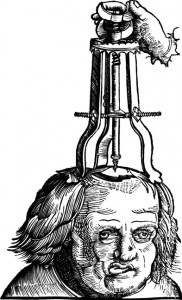- Bald-Head Club of America: Organized in Falls Village, Connecticut, in 1912. One of the conditions mentioned in the application for membership is the statement printed therein that the applicant’s bald spot is not less than three inches in diameter, and a further purpose is to promote social and fraternal relations between bald heads and cultivate a sentiment of sympathy for men who have hair. Membership fee, $1.
- Anti-Horse Thief Association: To ensure the safety of our people and the security of their property against loss by thieves, robbers, murderers, vagrants, tramps, incendiaries, and all violators of the law, and to secure for us and our families the enjoyment of life and the pursuit of happiness in the possession of our honest reward of labor with equal and just rights to all. Founded in 1854, membership 45,000.
- Telephone Pioneers of America: The objects of this society are social. They are to bring together those who were associated with the early days of the telephone business and perpetuate those friendships made at that time.
- The Anti-Saloon League of America: Organized at Washington D.C., December 18, 1895 and installed in all States and Territories, including the Hawaiian Islands and Alaska. The league throughout the nation employs about 1,000 persons, who give their entire time to the work of this institution, and it has about 175 offices from which were distributed during the year more than 2,000,000 book pages of anti-saloon literature per day.
- American Society for Thrift: The society was founded to promote thrift by inquiry, discussion, and education. It accepts no fees or contributions; it sends out regularly literature on the subject of thrift. In brief, its function is to lead to an American thrift propaganda. It has interested the National Education Association in its work, and that body has appointed a thrift board which is canvassing a plan of introducing thrift teachings in the public schools of America.
•Taken from the 1916 World Almanac and Encyclopedia.

